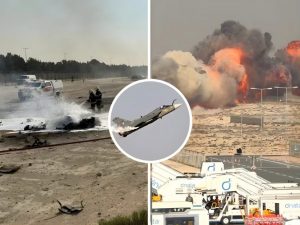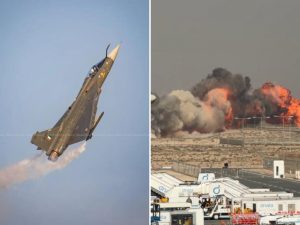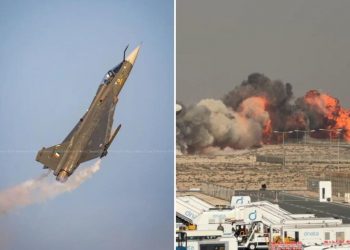An Indian Air Force fighter pilot, Wing Commander Naman Syal, lost his life during a demonstration flight of the Tejas aircraft on the closing day of the Dubai Airshow 2025.

The Indian Air Force confirmed the incident and expressed deep regret over the loss of life
A court of inquiry has been ordered to determine the cause of the crash, which the Air Force described as an accident in its initial social media statement.
According to the IAF, the Tejas fighter went down during an aerial display at the airshow and the pilot suffered fatal injuries.
read also: IAF Tejas Fighter Jet Crashes During Dubai Air Show Display
Eyewitness accounts reported smoke and a loud explosion, prompting the temporary suspension of the event
Authorities in the United Arab Emirates stated that emergency and firefighting teams responded swiftly to contain the situation.
This marks the second peacetime incident involving a Tejas fighter, a 4 point 5 generation aircraft developed by Hindustan Aeronautics Limited.
The first such incident occurred during an exercise in Rajasthan last year where the pilot survived.
The Tejas fleet includes both single seat and twin seat variants operated by the Indian Air Force and the Indian Navy, powered by an engine supplied by General Electric.
The crash in Dubai is also the fourth peacetime loss of an IAF aircraft in 2025. Pilots had managed to eject safely in earlier crashes in Haryana on March 7 and in Madhya Pradesh on February 25.
However, a paratrooper from the IAF skydiving team died after a crash landing during a demonstration in Uttar Pradesh on April 5.
Three training related crashes have taken place this year, including a two seat Jaguar accident in Gujarat on April 2 that resulted in one fatality and one injury.
A Mirage and two Jaguar crashes have been classified in the most severe category based on the extent of damage.
India has seen hundreds of military aircraft losses in peacetime over the last four decades, though analysts note that safety standards have improved.
According to a parliamentary committee report for 2024 to 2025, the accident rate for fighter jets has fallen from 0 point 93 between 2000 and 2005 to 0 point 27 between 2017 and 2022 and further to 0 point 20 between 2020 and 2024.
This figure represents accidents per 10,000 flying hours.
Contributing factors in past crashes include ageing platforms, human error in both aircrew and maintenance, technical failures, and natural challenges encountered in operational settings.
The committee also highlighted a shortfall in training aircraft, noting that the IAF had 238 basic, intermediate, and advanced trainers against an approved strength of 368, leaving a gap of 130 aircraft.





Discussion about this post